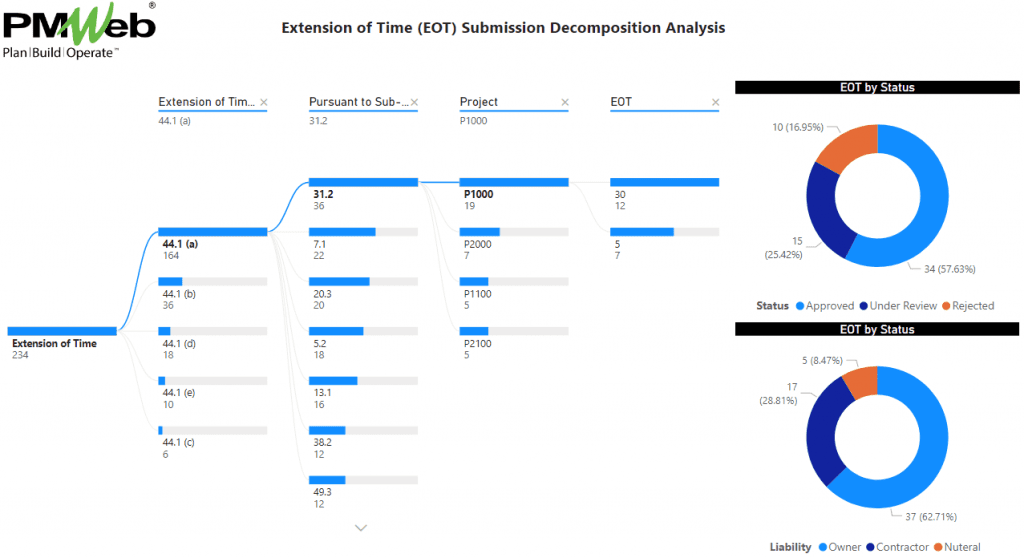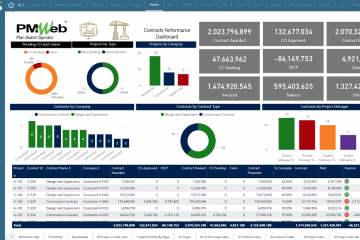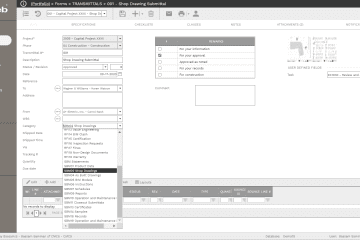Prolongation and extension of time claims for delay events and disruptions under construction contracts are becoming the growing trend in every capital construction project across the globe. Jeffrey Badman, associate director, Hill International Inc. has given his views on the best way to draft an extension of time claim. He has listed eight essential elements that must be addressed: The Event, Liability for the Event, Contractual Entitlement, Contractual Compliance, Cause and Effect, Delay Analysis, Statement of Claim, and Substantiation. For complete article details, please check the following link (https://www.constructionweekonline.com/article-1839-extension-of-time-claims).
A Project Management Information System (PMIS) like PMWeb not only be used to create the template for the Extension of Time (EOT) Submission which will address those eight points but also the solution to implement all project management and contract management processes that are usually relevant to EOT claim submissions. Those would include for example daily reports, meeting minutes, submittals, requests for information among others. PMWeb custom form builder will be used to create the EOT Submission. To ensure that the form is designed to capture the needed information in a comprehensive and complete format, the form will include all possible fields that could be applicable to an EOT Submission to eliminate the risk of incomplete and incorrect EOT submission. For example, under contractual entitlement, the form will include a list of all possible events that could cause delay along with its relevant contract subclause. For each possible delay event, the form will also highlight under which sub-clause the extension of time will be applicable to. Finally, for each possible delay event, there will be a field to select of the EOT submission has any of those delay events. The field will have by default the value as “No”. The value will be changed to “Yes” for the relevant Fields.
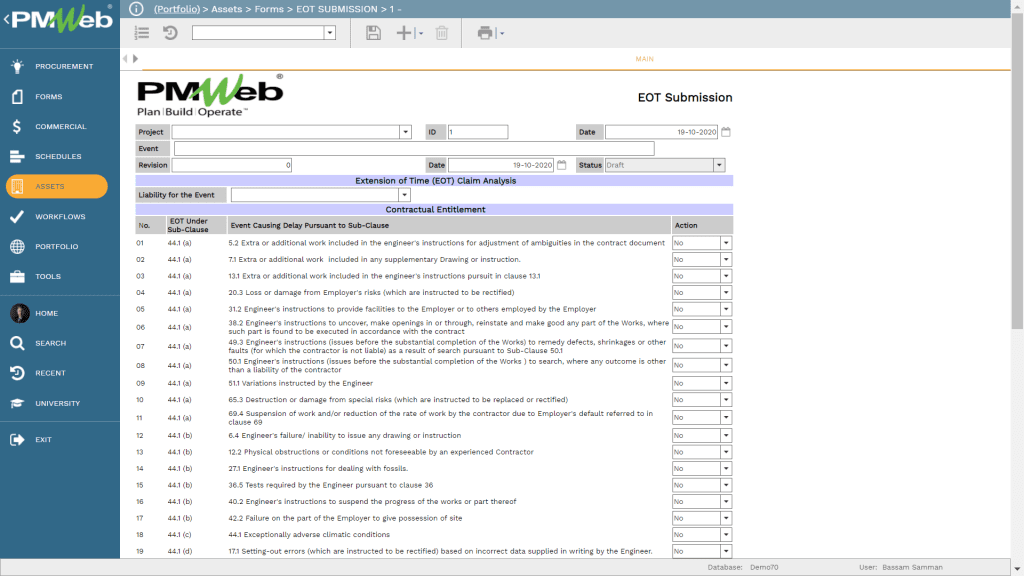
In addition, the EOT submission form will include fields to capture the date when the Contractor has submitted the claim notice along with details on what was submitted. In addition, the form will have fields to detail the delay cause and effect based on the facts describing the effect(s) of the event upon the works. Mr. Jeffrey Badman recommends that this should also include details of the planned works affected, referring to the planned sequence, durations, and methodology; the status of the works in relation to that planned at the time of the event; and, description of the changes to that plan as a consequence of the event.
The form will also include details of the delay analysis used to determine the claimed extension of time as well as a Statement of Claim to detail what the Contractor is claiming. The form will also include a list of all supportive documents used to substantiate the EOT submission. Those documents could include requests for information, correspondence, submittals, site work instructions, progress photos, minutes of meetings, baseline, revised, and updated project schedules, among others.
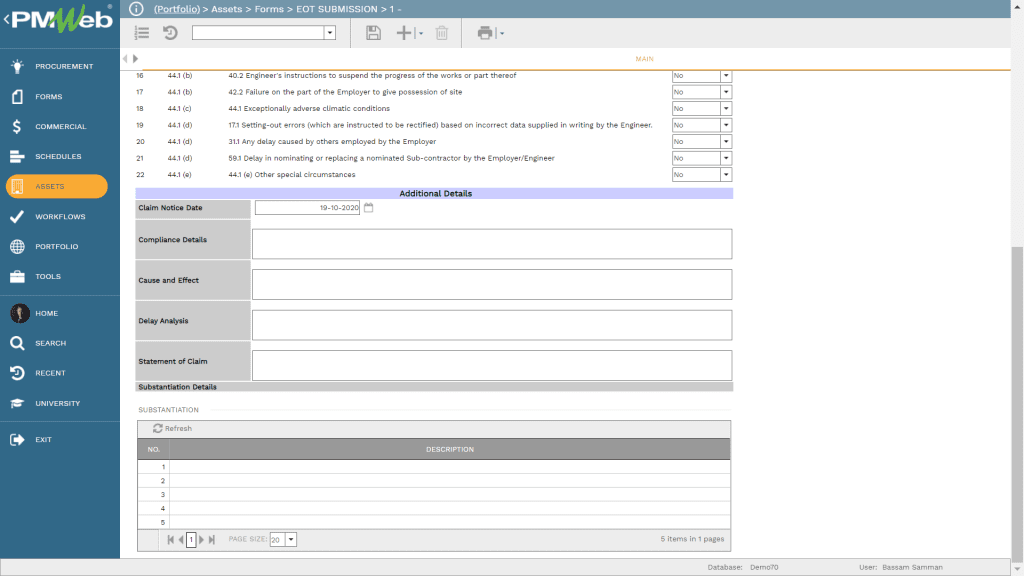
The documents listed under the substantiation details section will be attached to the EOT submission form. It is highly recommended that PMWeb document management system folder structure to be aligned with the Extension of Time (EOT) submissions. This will enable uploading and storing documents associated with each EOT submission in a separate folder for which each can be assigned with the needed access permission rights to limit access to those folders and subfolders to only authorized project team members. In addition, project team members can subscribe to any or all stage-gate folders so they can receive online or email notifications when new documents or document revisions are uploaded or downloaded.
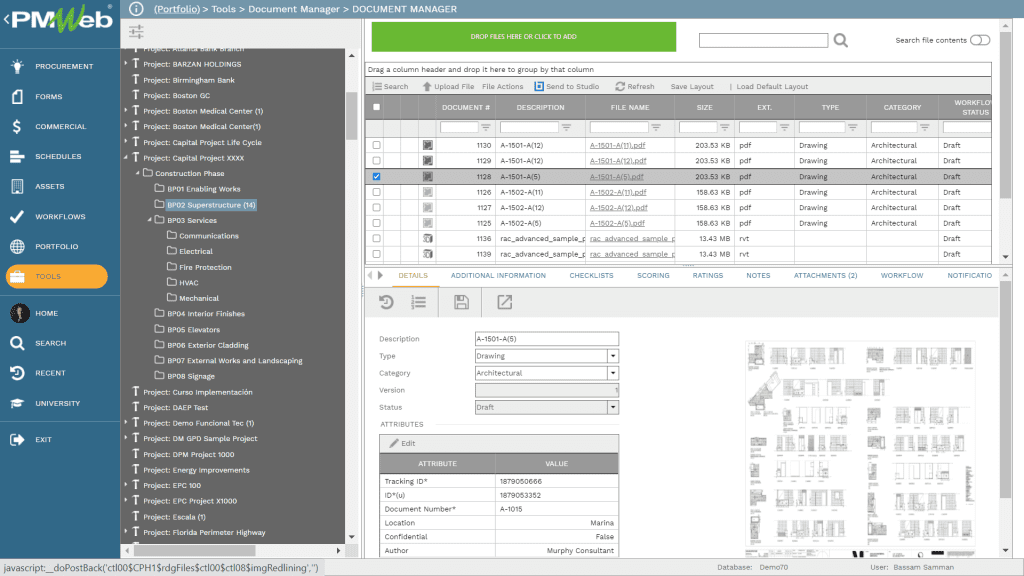
A workflow will be assigned to the EOT Submission form to ensure that the reported extension of time details and analysis are formally reviewed and approved and thus establish the needed accountability and transparency. The workflow will identify the sequence of tasks that are needed to submit, review, and approve the EOT Submission process. Those tasks will be assigned to their responsible project team members in accordance with the project’s responsibility assignment matrix (RAM) as well as the set authority approval levels.

The information captured using the EOT Submission form across the organization’s complete projects’ portfolio will provide a wealth of knowledge that the organization can use to analyze trends in prolongation and extension of time claims. For example, a report can be created to report on the key fields of the EOT submission forms such as project ID, date EOT was prepared, under which Sub-Clause 44.1 the extension of time will be claimed, details of the event that caused the delay and pursuant to which sub-clause an extension of time will be entitled, duration of the extension of time being claimed among others. The data shown in the example reports are fictitious and only used to generate and display the reports for which they can be designed and formatted in any desired layout.
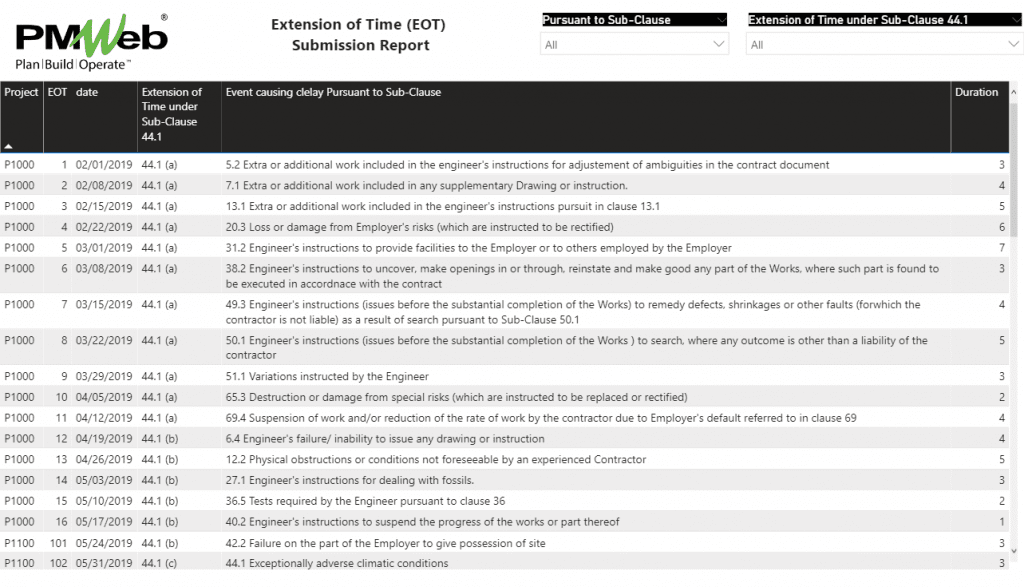
The same captured information can be also visualized and analyzed using some of the common visuals used to analyze the volume of transactions by different types and categories. For example, the treemap visual will allow visualizing the number of EOT submissions made by the different types of events that could have caused delays. The group will also sum the number of delay days requested under each type of those delay events. In addition, the report will group EOT submissions by the sub-clause 44.1 for which the EOT is applicable to.
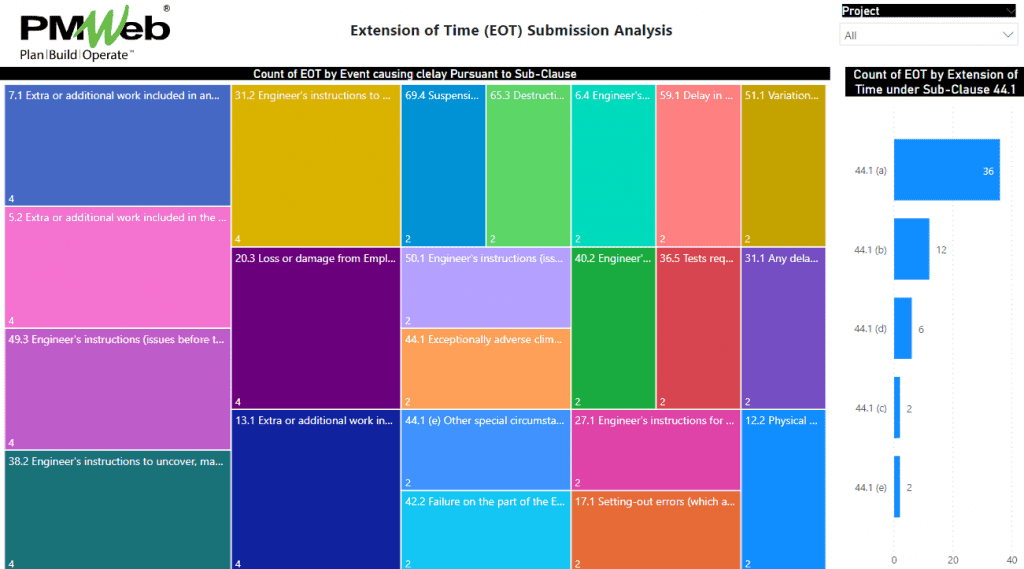
Another chart is the decomposition chart for which it details the total number of extensions of time delays issued on all projects regardless of the event that has caused the delay. The report will also include two visuals for which the first will provide a count of EOT submissions by their current status while the second will provide a count of EOT submissions by entity liable for the event that has caused the delay. All of those reports are interactive for which the displayed data will be automatically filtered when selecting any of the categories in the visuals.
